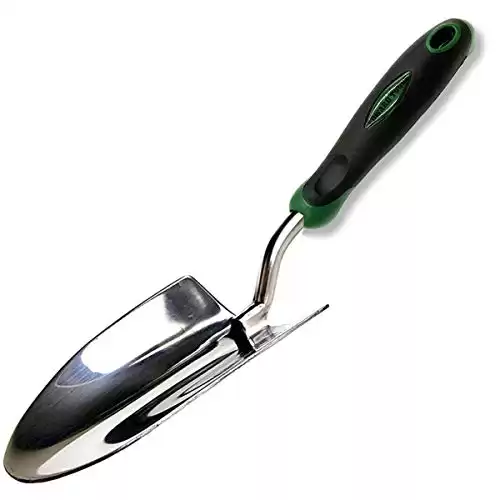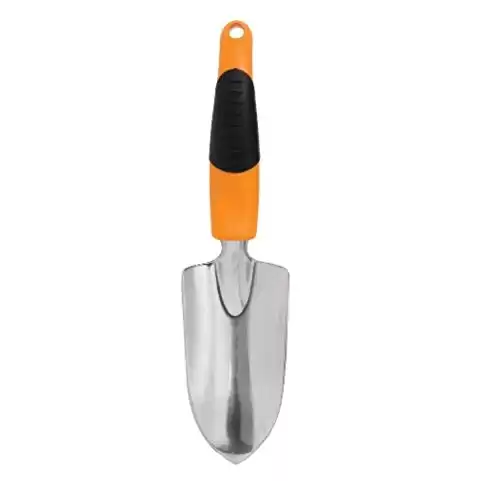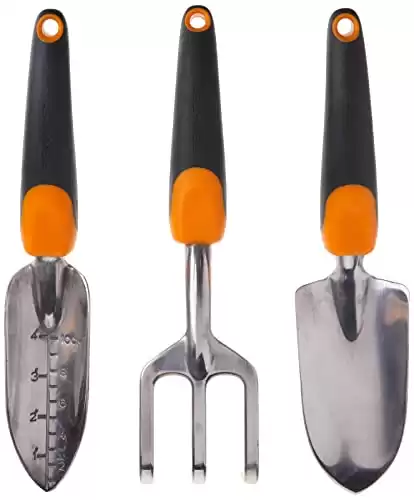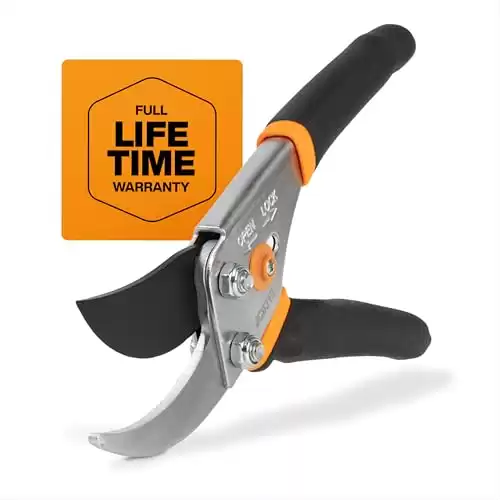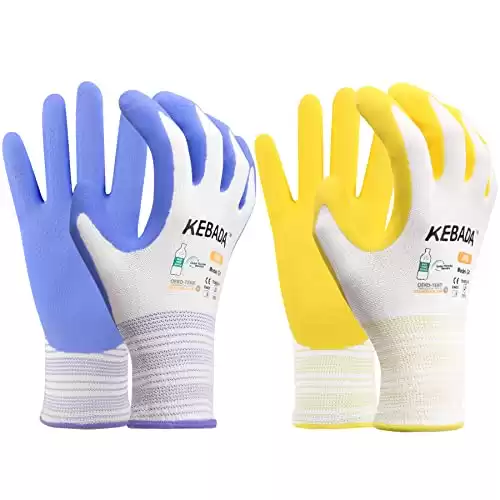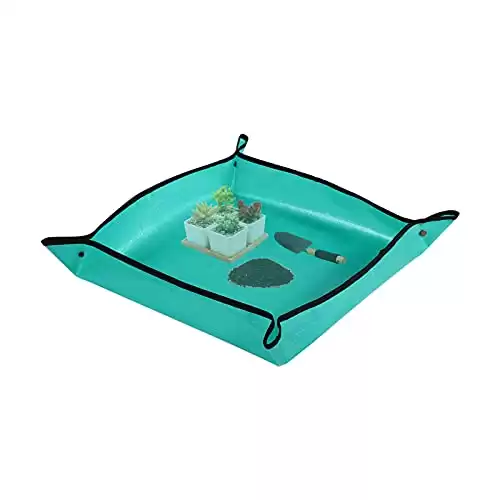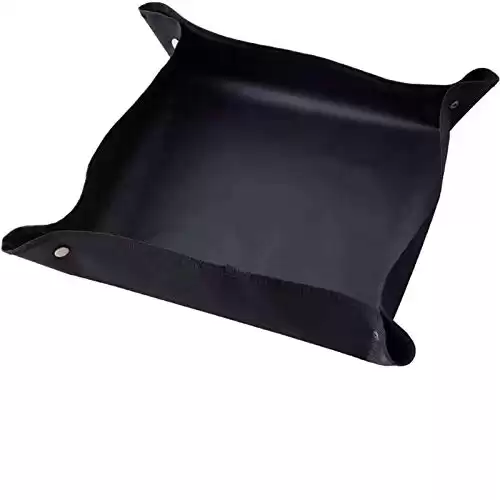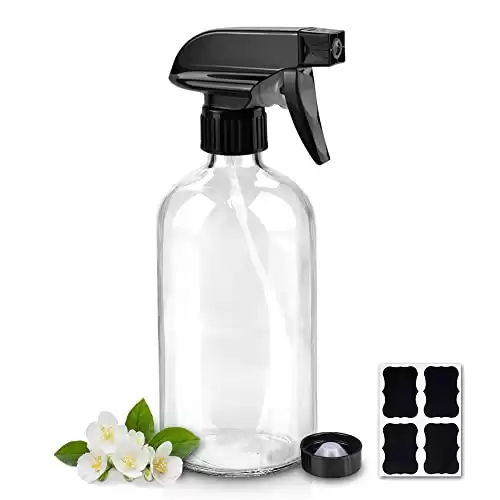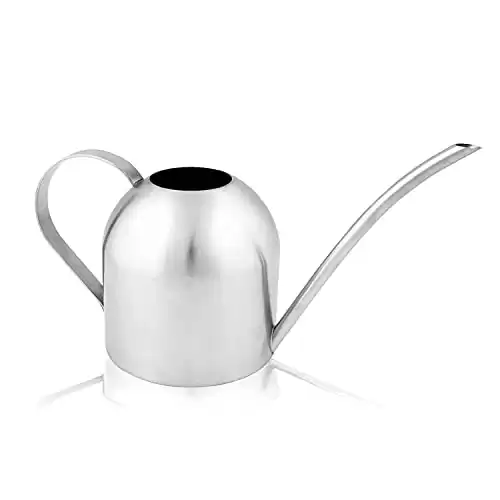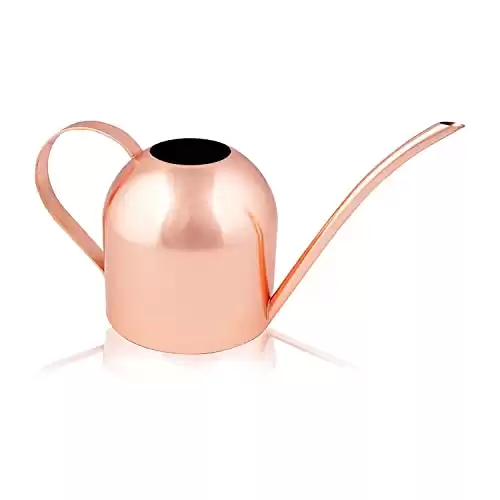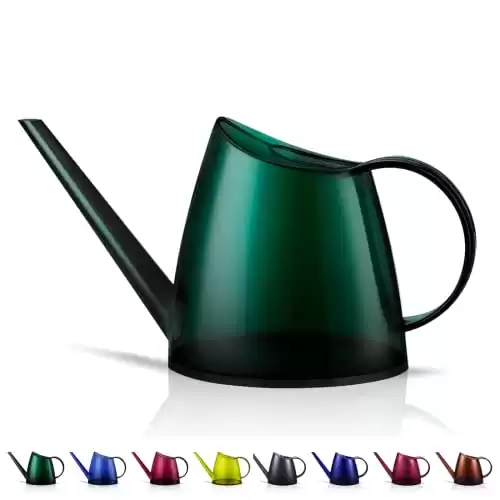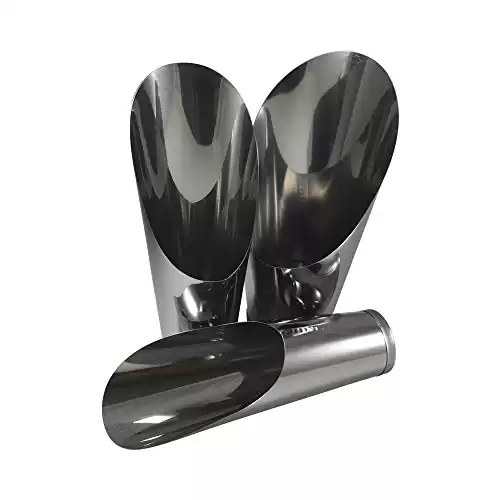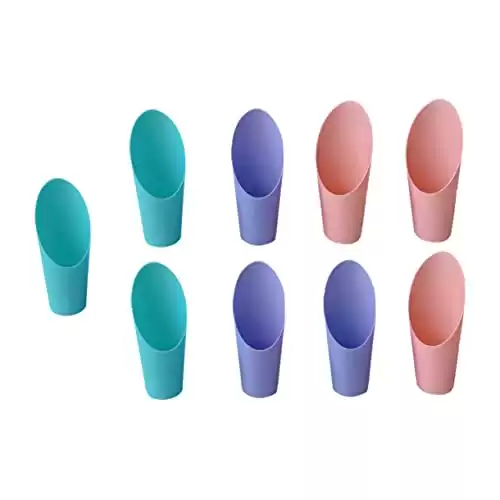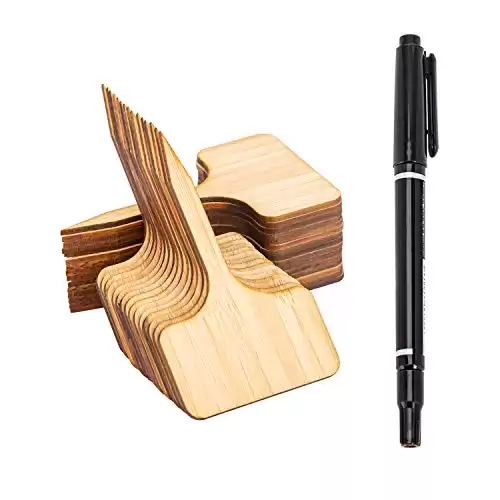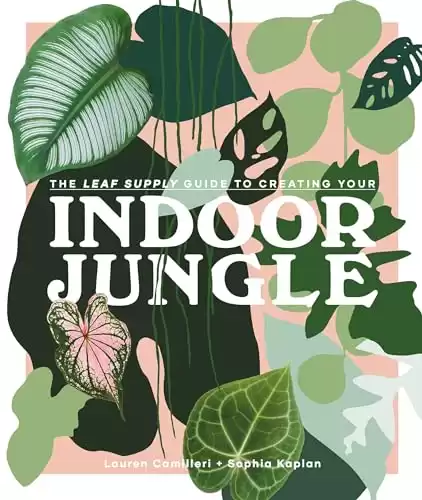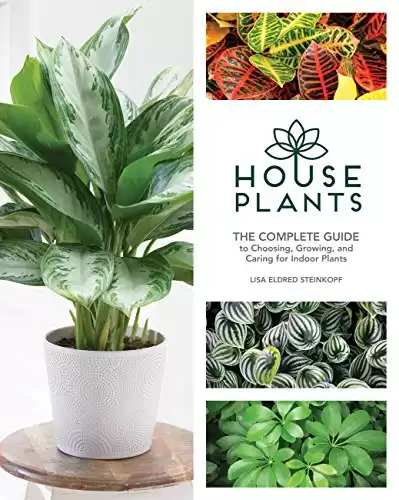You’ve picked up some amazing indoor plants and they are already brightening up your home. But your hard work isn’t done just yet. Keeping your indoor garden looking beautiful and healthy requires regular care. But it doesn’t have to be hard nor time-consuming. With these 9 essential indoor gardening tools, it’ll be easy and your plants will thrive.
Learning about all about a new area of interest, such as indoor gardening, has many benefits – challenging your mind, meeting new people, relieving stress. It is certainly inspiring to turn a bunch of beautiful indoor plants into an indoor sanctuary in your own home.
But keeping your plants healthy, looking lush and beautiful, requires some regular maintenance and common indoor plant tools. So, you will need to equip yourself with a few essential indoor gardening tools such as a indoor garden tool set.
I have 9 essential indoor gardening tools that I consider essential in my indoor gardening tool kit and I’m going to share these with you.
These stylish and essential indoor gardening tools will make indoor gardening fun and easy but also look good in your home. So, let me inspire your green thumb and help you identify the common gardening tools that will help you and your plants thrive.
What features should my essential indoor gardening tools have?
Considering which common indoor gardening tools to buy to add to your garden tool set?
Before you jump online and order a 48 piece indoor gardening tool kit, let’s think about what you really need and how to make your purchases stand the test of time. Essentially, many choices come down to personal preference and affordability.
Our recommended essential indoor gardening tools are tried and tested. Before you splash any cash on tools have a think about these things to make sure you get the best indoor gardening tools for your needs:
• Stainless steel – You should look for indoor plant tools that are made from stainless steel. These may be slightly more expensive initially, but stainless steel will keep your tools looking good for a long time, protect your tools from rust and eventual breakages.
• One piece of metal – Indoor plant tools made from a single piece of metal without welding joints will be stronger and more durable than those made from multiple parts or with joins. Look for indoor gardening tools made from a single piece of metal and those where the functional part of the tool extends to make the handles rather than the handles being glued or added onto the functional part.
• Rubber coated handles – You should also look for indoor plant tools that have rubber coated handles. The rubber coated handles are more comfortable and protect your hands from calluses and blisters.
It is also important to think about your specific needs when buying common indoor plant tools. As an example, a large, heavy watering can would be fairly useless and extremely heavy to lift up to the required height if all of your indoor plants were in hanging pots.
Similarly, no matter which indoor plant tools you purchase, you will need to store these inside your home. Consider where you will store your tools and containers of stuff (e.g. pebbles, fertilizer, potting mix). How much room will you need?
Tripping over a watering can on your way to the bathroom late at night will not only wake everyone in the home but annoy the bleepers out of you!
Most importantly, is your storage space a safe space away from tiny hands, curious minds and pets?
So, think carefully about how you are going to use your indoor plant tools and where you will store them. Ensure you buy the best indoor gardening tools and accessories suitable for your specific needs and budget.
Hand trowels
Hand trowels are one of the most versatile and essential indoor gardening tools. It is a very common gardening tool and your primary digging tool. The humble hand trowel can be used for digging or turning over soil, transplanting plants, scooping out or moving soil from one container to another.
I like to buy a stainless steel hand trowel with a nice rubber coated handle. Afterall, it is vital for the handle to feel comfortable in your hand in order to prevent wrist fatigue. There are ergonomic hand trowels available and versions that are specifically designed for older people and children.
If you are going to be planting bulbs or starting your plants from seeds or seedlings, a hand trowel with depth markings on the blade is useful for determining the right depth of hole for these.
I love the Edward Tools and Fiskars hand trowels. They are two of the best on the market. Both are rust resistant, feature ergonomic handles and come with lifetime warranties.
However, if you want a hand trowel or transplanter with soil depth markers, we recommend you buy this indoor gardening tool set which includes a trowel and a transplanter with depth markers:
Pruning shears
While your everyday scissors might help you trim the odd leaf or stem, sooner rather than later, they will lose their sharpness and become useless for cutting even the easiest of things. Imagine yourself trying to cut wrapping paper in a hurry to wrap a present and all the scissors so is tear up the paper – urgh frustrating!
So, save your scissors and get the right indoor gardening tool for the job – pruning shears or secateurs.
Pruning shears are another very common gardening tool – essentially a cutting tool designed to easily trim foliage, cut stalks and stems, and even cut exposed roots. They are ergonomic and designed to apply the right type of pressure to cut through plant stems, stalks and even branches without hurting your hand.
There is an extensive variety of pruning shears available for purchase.
Bypass pruners are the best choice for indoor gardening usage where most of the maintenance work is centred around cutting off dead foliage or trimming green plants. Bypass pruners make cleaner cuts and minimize the risk of plant injury as well.
Again, you can buy specific pruning shears for left-handers, older people and children.
We recommend the Fiskars Steel Pruning Shears which come with a lifetime warranty and a lock to protect the blades and prevent injury.
Garden gloves
Not strictly a common gardening tool, rather an accessory, but if you don’t want to walk around with grubby fingernails or practice any form of under nail torture, gloves are essential. Some plants have spiky stems, thorny leaves and even release sap when cut so we want to protect against these hazards.
For people with sensitive skin, it is best to avoid all of these coming into contact with your skin. People with sensitive skin can develop an allergic reaction to fertilizers, other garden chemicals and even particular plants. This list of 36 plants that cause skin irritation may be helpful.
When choosing indoor gardening gloves, make sure you select the right size – you don’t want your gloves to constantly slip off your hands. Similarly, gloves that are overly tight will probably result in discomfort and blisters.
The glove material should be highly durable, water-resistant, and breathable to prevent your hands from sweating. Long cuffs are also good to provide wrist protection against scratches and prevent soil from sneaking down the side and into the gloves.
I love the Kebada gardening gloves. They are lightweight and breathe, can be machine washed, feature grippy palms and fingers, and elasticated wristbands to keep out dirt.
I buy more than one pair. I always keep a clean pair for handling potted indoor plants so I don’t leave grubby finger prints on the pots when moving them around. It means that I can keep gardening while one or two pairs are in the wash as well.
Wearing high-quality indoor gardening gloves will keep your hands clean, prevent potential rashes and allergic reactions, and prevent potential injuries when using other common gardening tools.
Repotting mat
Unlike working outside in the garden, where excess soil can be brushed into the nearest garden bed, pot or onto the grass, working inside can be a little more challenging. Rarely will an indoor gardener have a space set aside predominately for gardening. Most likely, you will use the kitchen or laundry bench, a spot on the balcony or even the kitchen or bathroom floor.
Again, not strictly a common gardening tool but I find that a repotting mat is the answer.
Repotting mats allow you to set up a space to get dirty. A space where you won’t be worried about the odd handful of potting mix falling outside the pot while repotting.
These mats help you clean up quickly afterwards and fold up to store in small spaces.
I recommend the NSWDYLO repotting mat. It is waterproof. It has a nifty leak proof corner design whereby each of the four corners has two buckles. When buckled up, the four corners can easily prevent water and soil from leaking out, and keep your indoor environment clean.
To pack up, undo one set of buckles and gently shake the excess soil and other debris towards this corner funnelling this into the bin.
Spray or misting bottle
Having a couple of spray bottles handy makes indoor gardening easy. Spray bottles can be used for:
• creating a mist to increase humidity for some tropical plants
• spraying and then wiping dust from the foliage of your indoor plants
• spraying fertilizer on the foliage of your plants (make sure this is how the fertilizer is designed to be used and your plant enjoys getting its foliage wet)
• mixing a soapy water spray to remove indoor plant bugs should you find you have some indoor plant pests, not guests!
• watering very small plants
It is very important to purchase a spray bottle with an adjustable spray nozzle. For some jobs you will want to create a fine mist, for others you will want a targeted stream of water.
Also, choose a spray bottle that is not too large and not too small. If you are mixing fertilizer, you won’t want to premix too much but if you are misting tropical plants you won’t want to be refilling the bottle after each plant.
Important Tip
Be sure to mark each spray bottle clearly with the contents and the date that you filled it. Keep out of reach of tiny fingers and animals.
I like the Worldgsb Glass Spray Bottle. It has an adjustable nozzle, is made from sustainable glass and has a funky design that would look good in any indoor setting.
Watering can
Save your back and your floor covering, get a good quality watering can. I have heard many stories of indoor gardeners carrying around large quantities of water, bending or stretching awkwardly to water indoor plants, and even losing control of buckets only to damage wooden floors and carpet.
In choosing a good quality watering can, you want to consider:
• rust proof – materials such as stainless steel or plastics are obviously best
• has a long spout – you want it to have a spout that is long enough to reach down or across to your plants without you having to bend over too much
• connection of the spout to the rest of the can – there is no point if you can’t empty the contents of the watering can because the spout joins at a position halfway up the can
• weight – choosing the right size watering can so that when it is filled you can still lift it and control the watering can
Watering cans are an extremely common gardening tool and sold in a wide range of materials, sizes, colors, shapes and designs. You can choose one that is functional but also one that will complement the aesthetics of your indoor environment.
I like the design appeal of the Homarden Watering Can. At 1.3L, it is a good size with a retro-inspired design. It is stainless steel and comes in either stainless steel finish or a beautiful copper finish.
If you prefer plastic, the WhaleLife Indoor Watering Can is a perfect size at 1.4L and is pretty funky as well.
Soil scoop
In my early twenties, I became fascinated with bonsai – the Japanese art of tiny trees. I took a number of courses to learn the various styles and techniques of bonsai and I have never regretted this. It is a very particular and accurate form of art that requires patience and attention to detail.
It was during these courses that I began using soil scoops. These indoor gardening tools are perfect for moving various amounts of soil from the plastic potting mix packaging or spreading gravel and pebbles on top of the soil as a decorative surface.
I could not live without soil scoops as part of my indoor gardening tool kit.
Realistically, you can fashion a basic soil scoop from an old plastic bottle, but I have unfortunately injured a stem or two of my plants doing this because of the sharp edges or cut plastic.
Like I said, the bonsai enthusiasts do it best. I love Bonsai Outlets soil scoops. They comes in three nifty sizes to enable you to get the soil in just the right spot. They are sturdy and stainless.
If you prefer plastic, the Happyyami soil scoops come in a set of 9.
Garden tags
Similar to staying clean, tidy and being able to store your indoor gardening tools within your home, staying organized is fundamental to indoor gardening.
It’s easy to forget which plant you are growing, when it was planted in its pot and even the last time it was fertilized.
I use AIEX Bamboo Garden Labels as one of my go-to common gardening tools. While there are many plastic or paper varieties available, I prefer bamboo because they are a sustainable product and they also look more funky.
Important Tip
Use a garden or waterproof marker to prevent writing from fading or washing off in the rain.
Indoor gardening books
And last but not least, I like to flip through the pages of an indoor gardening book for inspiration and guidance. Whether it is reading about my latest indoor plant and its needs or simply getting ideas on how to group my plants, these books have it all.
The Leaf Supply Guide to Creating Your Indoor Jungle by Lauren Camilleri and Sophia Kaplan is a must for indoor gardeners. Ablaze with jaw-dropping photography and essential information on different types of plants and their needs, this book will earn its place on your coffee table and in your library.
Similarly, the amazing photographs in Houseplants by Lisa Eldred Steinkopf will help you identify indoor plants and any potential issues. Each page features a single plant and gives a quick rundown of the plant’s basic requirements.
Also, check out our blog article on the top 10 best indoor gardening books for a more detailed review.
Conclusion
In these crazy times, with many of us now working from home, it’s important to cultivate an indoor environment that is healthy, calming but also looks beautiful. Growing indoor plants not only improves the air quality in your home, but also offers a new challenge and a way to reduce stress.
Indoor gardening is a very rewarding and beneficial activity. With the right essential indoor gardening tools and skills, you will enjoy watching your efforts evolve into a beautiful indoor garden sanctuary.
So, there you have it, my 9 essential indoor gardening tools to ensure you have all the right tools at your finger tips. Add these common gardening tools to your shopping list.
Remember, life is better with indoor plants!
Credits: Main photo by Bruno /Germany from Pixabay


